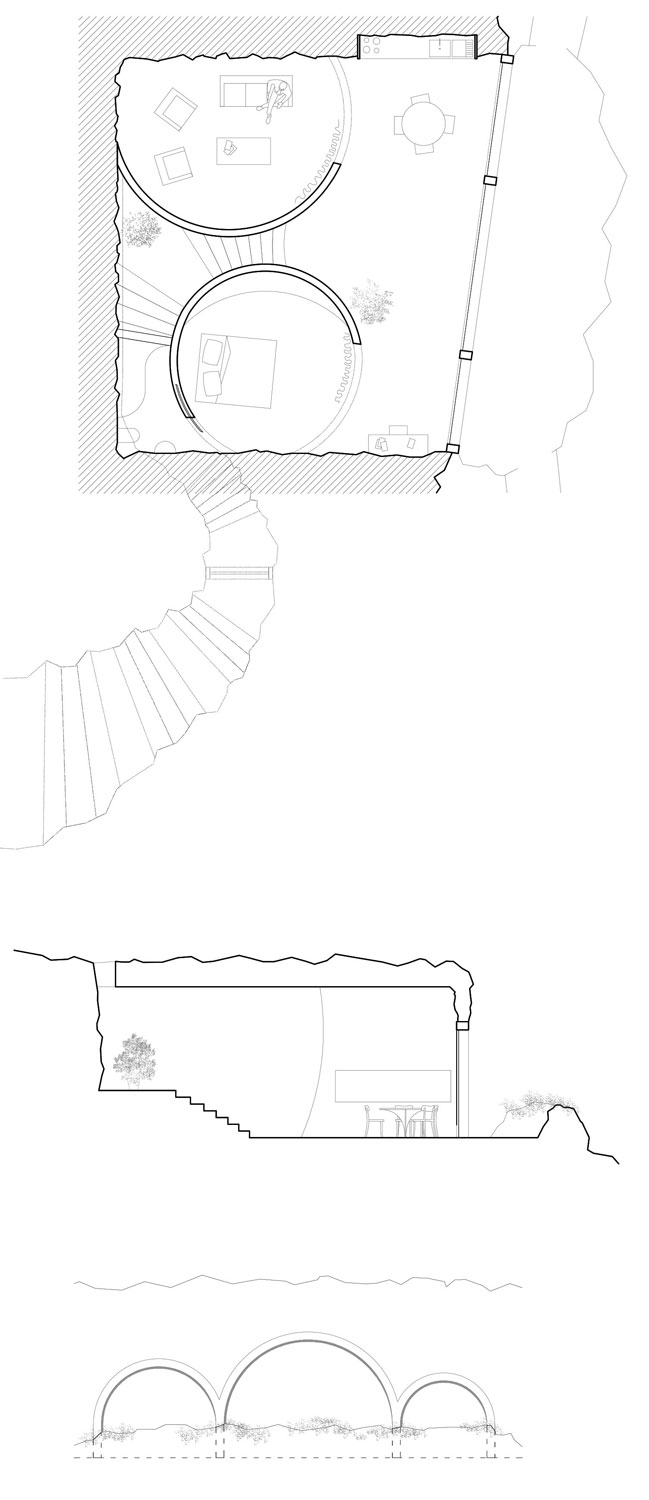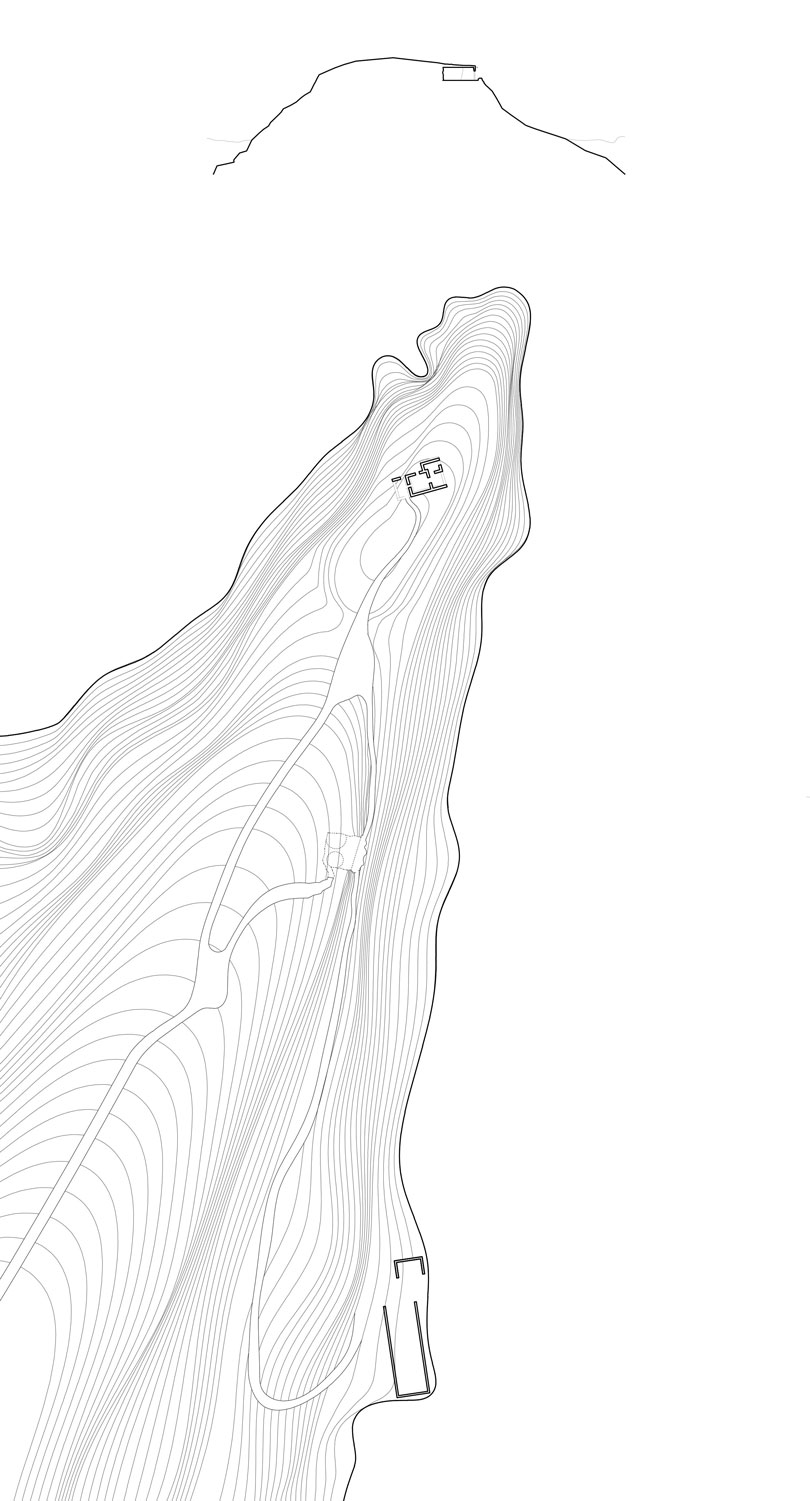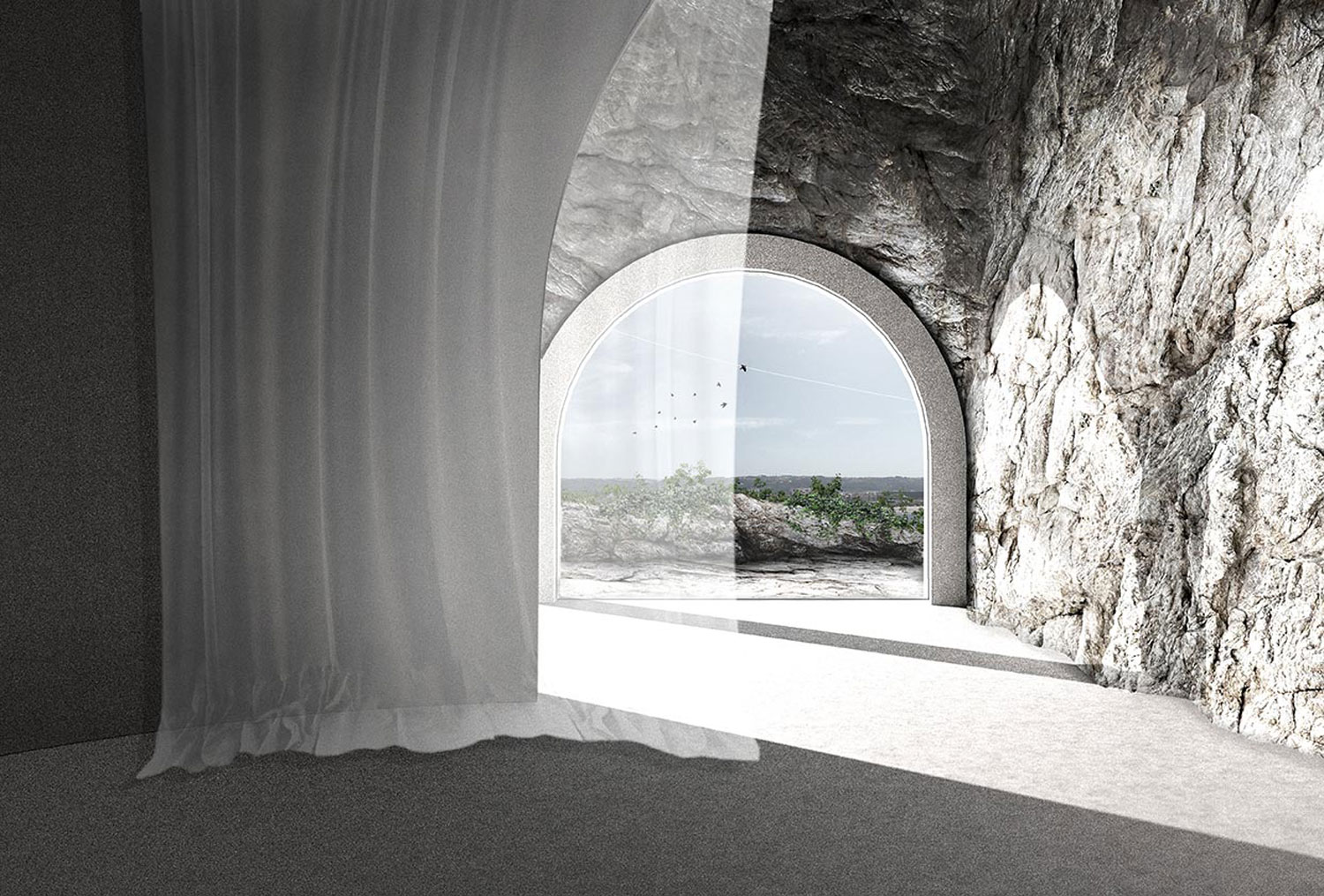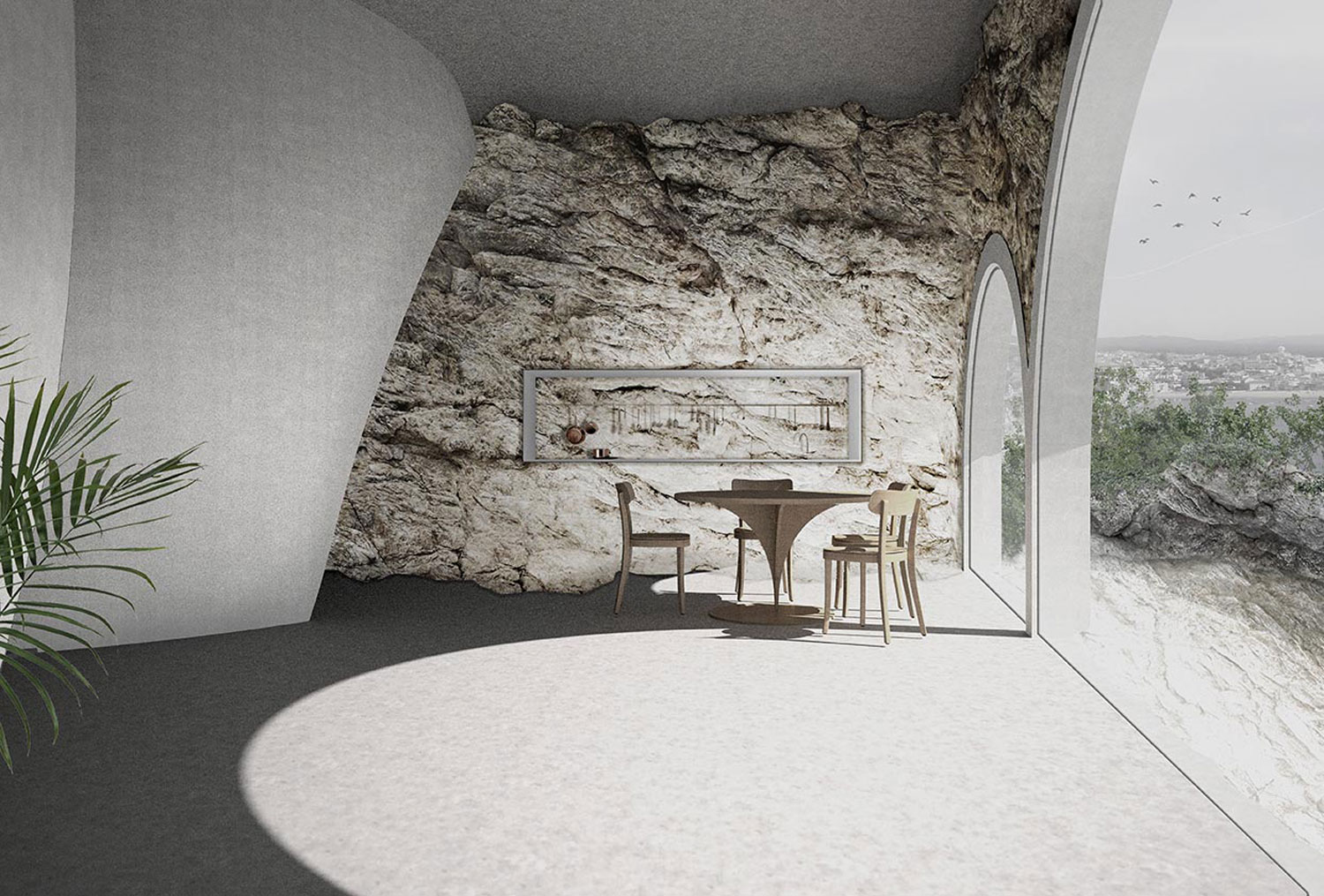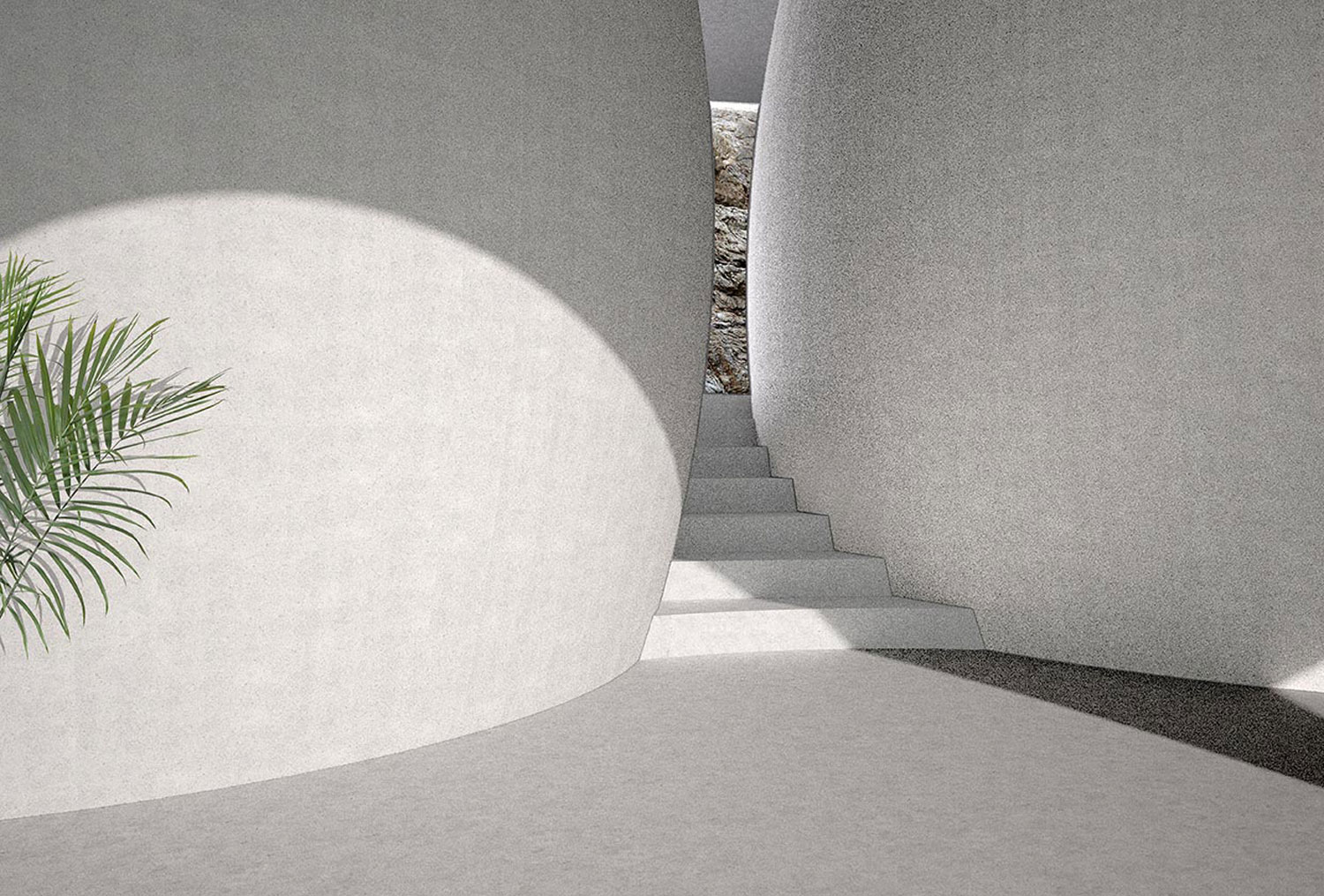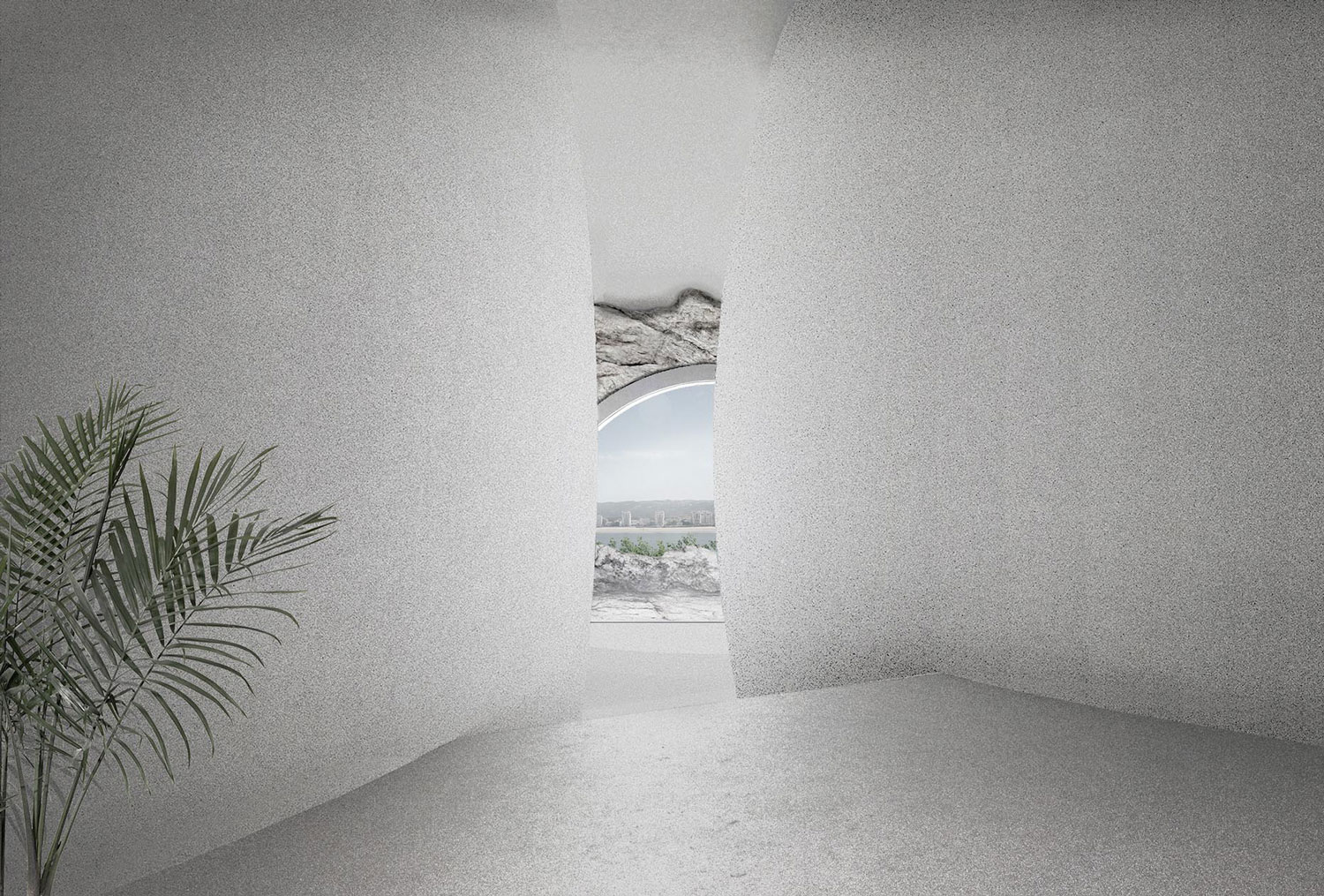2013-BUD-PT-2017
Client: ArkXsite
Status: Competition (2017)
Location: Salir do Porto, Portugal
Coordinates: 39.50818,-9.1485347
Climate: Mediterranean, Temperate
Materials: Concrete, Stone
Environment: Seaside
Visualizer: Studio
Scale: Extrasmall
Types: House, Residential
The site is drawn by the transition between an infinite horizon and a defined bay. A dialogue between the expression of nature and the elements, the cliffs, the rock with its unsettling and constant twisting contour and the domestication of man, the beach, the city and the curve of the site. A confrontation between the curves of the man-made and raw rock of the cliff thus exists. This duality characterizes the landscape and generates a strong contrast, giving identity to the site. The project seeks to capitalize on the territorial value of the site and preserve its authenticity.
On this principle of devotion, the dwelling is found excavated within the mountain, minimizing its visual impact and submitting itself to the expressive dominance of nature. The ruins, a testament to another era, are left intact, free to be accessed. The dwelling is thus «held» and connected by trails, inviting one to walk and experience the two vestiges present on the site.
Rather than framing an ocean horizon, as is convention, our unique dwelling is oriented on the bay and thus directly engages with the identity of the place. In addition, the space is activated by a light taken to the south, amplifying the quality of the interior atmosphere.
The curved fusion «structural – eroded rock – landscape» developed in our project also echoes the ruins of the Chapel of Sant’Anna. An architectural vestige sculpted for decades, just as the cliff is in itself a natural vestige carved by the elements for millennia. It is thus a reinterpretation of this analogy which fuels the character of the project.
The spatial concept aims, with simplicity, to re-transcribe the territorial duality, namely the cohabitation of two very strong geometries. Excavating the mountain creates a shelter in itself. The vacuum is then defined by the integration of two structural curves supporting the rock and drawing the different interior spaces. This strong gesture gives its character, strength and simplicity to the project.
The places of rest, with borrowed lighting, by use of the curtain, provide an introverted and isolated experience within the dwelling. The modelling of a terrace in the rock offers a clear view that engages the village of Sao Marthino do Porto, offering a finality to the entrance route of the project.




